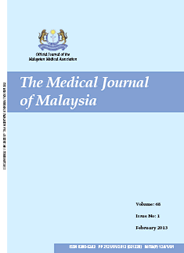MJM, Vol 70 Supplement 1 September 2015
An ethnographic mapping of alcohol accessibility in
different ethnic communities residing in urban and semi-urban areas within
Klang Valley, Malaysia
Perdana University-Royal College of Surgeons in Ireland School of Medicine
ABSTRACT
Introduction: Evidence indicates affordability and availability of alcohol play a central role in shaping levels of consumption; locally, there is limited information on alcohol consumption-we only know that risky alcohol consumption patterns are evident-thus is there a problem? The objective of the study is to carry out ethnography mapping that map out geographical relationships of alcohol accessibility within community settings.
Method: An ethnography mapping activity was conducted over 4 months in urban and semi-urban areas within Klang Valley Malaysia from 2013-2014 to assess availability and frequency in which alcohol is consumed. Setapak (Malay), Cheras (Malay, Chinese), Petaling Jaya (Chinese), Batu (Indian), and Ampang (Indian) sites were chosen as they represent the highest density of the three different ethnicities.
Results: 171 service providers and outlets that sold alcohol at their premises was mapped out at respective metropolitan areas in the five sites (within 500m radius). More alcohol service providers were noted in Chinese populated area (9-109), compared to Indians (6-20) and Malays (0-42). Average operating hours is within 15 hours a day. Chinese consumers were mostly consuming alcohol in stalls and restaurants, while Indians were noted gulping down alcohol in bottles directly after purchase, while Malay drinkers were observed purchasing drinks that are consumed at the back of the shops/home to avoid been sighted.
Conclusion: Findings from this study concluded that the stigma and discrimination associated towards alcohol consumption within community settings, promotes risky drinking patterns (e.g., binge drinking, drink driving) – which is evident amongst the Indians and Muslims. Evidence indicates that 8 or more alcohol outlets within 1 km radius increased the rate of diseases and harmful behaviours. Thus, the mapping exercise from this study has certainly revealed the need for policy and service provider’s guidelines to ensure that a harm minimisation approach is adapted on managing alcohol accessibility within local context.
